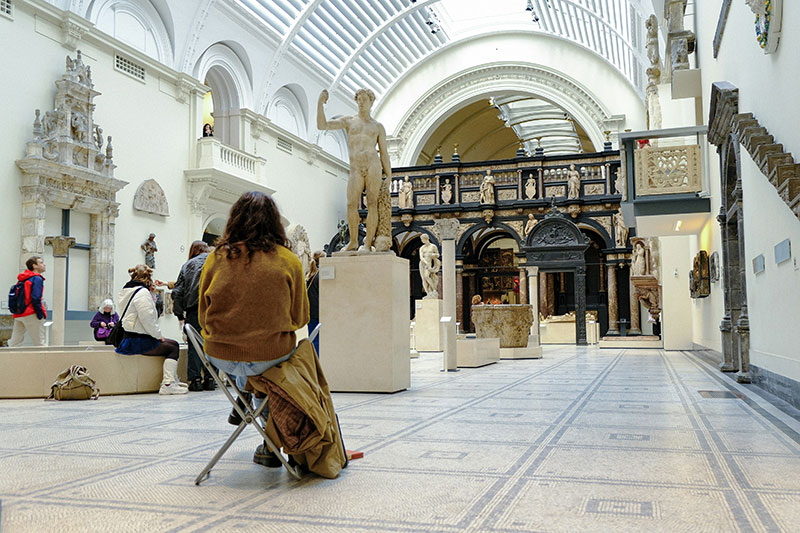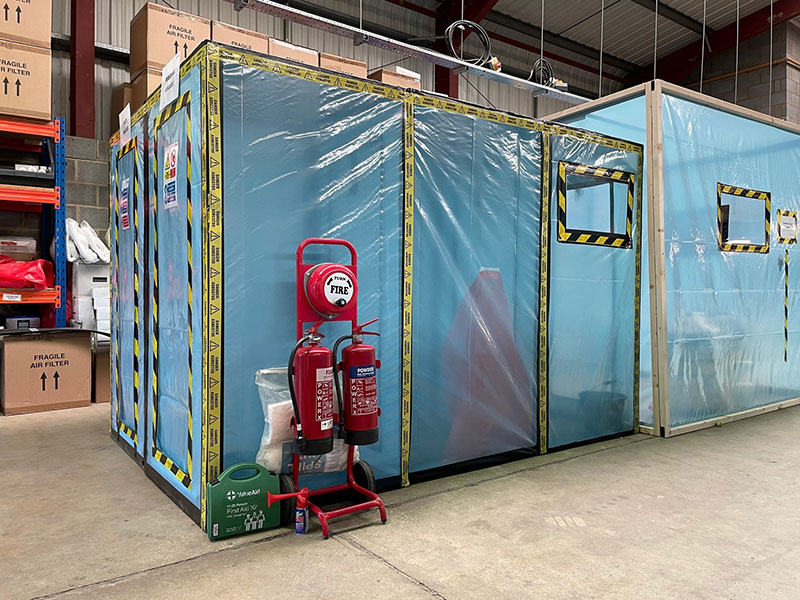How do you carry out asbestos removal in UK museums and heritage sites?
Asbestos is a hazardous material that can lead to serious diseases and life-threatening cancers years in the future.
While asbestos isn’t dangerous in an undisturbed state, when an asbestos-containing material (ACM) breaks down or is damaged, it releases toxic fibres into the air. When inhaled or ingested, those fibres adhere to the lungs and can go undetected indefinitely. Eventually, this can cause a host of respiratory problems or cancer.
By not addressing asbestos risks in heritage sites and museums, you’ll put everyone’s health at risk. Additionally, you may face higher costs for asbestos remediation in the future, along with legal liabilities for failing to comply with asbestos regulations.
The Control of Asbestos Regulations 2012 (CAR 2012) covers approved practices and guidance for asbestos work. According to the Health and Safety Executive (HSE), CAR 2012 specifically covers legal duties, while the Approved Code of Practice (ACOP) and supplementary guidance text offer practical and actionable advice for complying with CAR 2012’s requirements.

What are the unique challenges of asbestos removal in museums and heritage sites?
Asbestos was banned in the UK in 1999, so only older buildings will contain asbestos today. However, since many museums and heritage sites were built several years ago — commonly long before 2000 — there’s a high likelihood that these types of buildings contain asbestos.
With heritage sites and museums, it’s important to balance the preservation of historical artefacts with ensuring the safety of workers and visitors. Furthermore, these types of buildings often have complex architecture that complicates asbestos removal even more, especially if the architecture itself also has historical significance and should be preserved.
It’s important to hire asbestos specialists who are experienced in unique environments such as these, as they’ll know how to handle the obstacles that are specific to heritage sites.
How is an asbestos survey conducted in heritage sites?
An asbestos expert or team of experts will conduct an asbestos survey, which includes thoroughly inspecting the buildings and objects to identify any asbestos-containing materials (ACMs). Specialised equipment and techniques are used to conduct a comprehensive survey while preventing an asbestos exposure event. Non-invasive techniques are used whenever possible to protect the artefacts in the collection as well as the building’s structural integrity.
What is an asbestos survey report?
According to Asbestos: The Survey Guide from the HSE, “The survey report is a record of the information collected at a particular time on the presence and condition of ACMs.” The report serves as a formal record of the survey and, therefore, must be entirely accurate and reliable.
The asbestos survey report should include these sections:
- Executive summary
- Overview of the scope of work
- General information about the site and survey
- Specific survey results and material assessment results
- Conclusions and suggested actions to take
It’s best if the asbestos survey is well-organised and easy to read and understand.
What precautions are taken to protect artefacts during asbestos removal?
Relocating historic artefacts and objects takes precision and care, as many of them are delicate and need proper handling to maintain their integrity.
If possible and necessary, artefacts will be relocated during the asbestos removal project. If they can’t be moved, measures will be taken to protect them from damage while asbestos removal takes place.
To protect artefacts and parts of the building that aren’t part of the asbestos removal project, the team will seal off the work areas. This ensures that airborne asbestos fibres don’t contaminate other areas of the building.
What environmental controls are put in place during asbestos removal?
A number of environmental controls are used during asbestos removal, such as the following:
- Physical barriers and decontamination areas are set up to contain the work areas.
- Specialised filters are used to capture airborne asbestos particles so they don’t spread throughout the site.
- Negative air pressure in the containment area keeps airborne asbestos fibres within the designated space.
- Ongoing air monitoring ensures that the concentration of asbestos fibres in the air is within a safe limit for workers.
- Maintaining a humidity level of approximately 70% minimises the chances of asbestos fibres going airborne.
These types of environmental controls and compliance with regulations protect workers during an asbestos project while keeping the surrounding area from being contaminated.
How are asbestos removal projects planned and managed in heritage sites?
Specialised expertise is required to preserve artefacts and structures while keeping workers, staff and visitors safe from asbestos exposure. Asbestos management services for heritage sites and museums commonly include the following phases:
- Asbestos Survey: As discussed above, the asbestos survey takes an account of the ACMs in the building. The information is thoroughly recorded in the asbestos survey report, acting as a starting point for the next steps.
- Risk Assessment: During this stage, experts assess the risk of the ACMs on the property. Considerations include the condition of each ACM, how accessible the ACM is, and potential exposure issues.
- Asbestos Management Plan: Based on what the asbestos team finds during the survey and risk assessment steps, a custom asbestos management plan will be developed, keeping in mind the unique needs of the heritage site. The management plan will include information about containing and/or removing asbestos and follow-up monitoring of the asbestos.
- Asbestos Containment or Removal: Steps are taken to either contain or remove the asbestos materials, following best practices and legal regulations.
The asbestos team’s main goal will be to minimise health risks as much as possible while keeping the building’s artefacts and structures intact.
Additionally, it’s always preferred that asbestos projects are carried out without causing more interruption than necessary to typical museum operations. This may mean closing off part of the site while enabling the rest of it to operate as normal.
How is worker safety ensured during asbestos removal in heritage sites?
Heritage sites and museums face the unique challenge of preserving culture and history while simultaneously protecting the health and safety of others.
As always, regardless of the type of property, anyone who works with asbestos must have the required training before starting a project. Asbestos experts should always have advanced asbestos training and up-to-date certifications to show their proficiency.
Additionally, asbestos workers should be licensed to perform certain types of asbestos removal work while staying compliant with CAR 2012. Advanced asbestos removal projects often require a license, and performing the work without one can lead to legal issues.
There are also specific types of personal protective equipment (PPE) that asbestos workers will wear to reduce the risk of asbestos exposure and contamination, such as:
- Disposable work clothing
- Footwear that can be worn without laces
- Eye protection
- Respiratory protective equipment (RPE)
Since asbestos workers are exposed to asbestos fibres so often, ongoing health monitoring programs include air monitoring and regular medical evaluations.
What are long-term management strategies for asbestos in heritage sites?
To ensure that asbestos exposure doesn’t occur in the future, ongoing monitoring and maintenance must take place. Conducting regular inspections will alert you to any ACMs that have changed in condition since the last survey and could now pose a risk. As a result, the asbestos risk assessment and management plan may need to be updated.
Depending on what types of ACMs are left, future-proofing may also be a smart choice. This means modernising and retrofitting the building to reduce or eliminate the risk of asbestos exposure in the future. For example, ACMs may be replaced with non-asbestos materials so they won’t pose a problem down the line.
Final thoughts: What is the future of asbestos management in heritage sites?
Heritage sites and museums typically have objects and structures that date back decades or longer. It’s likely that many of these materials will contain asbestos, as it was commonly used until it was banned in 1999.
As heritage sites and museums continue to age, so will ACMs. Time and normal wear and tear can result in the degradation of ACMs, even if they currently appear to be in good shape. As ACMs age, they can break down or become more susceptible to damage. Over time, the risk of asbestos exposure can increase, possibly without the building’s dutyholder even realising it.
It’s important to commit yourself to ongoing asbestos safety when you’re in charge of a heritage site or museum. While the preservation of artefacts is a priority, the safety of those in your building is even more important, as asbestos can lead to life-threatening and fatal diseases.
For more information about asbestos management in your heritage site or museum, contact Oracle Solutions today.

Written by Callum McDonald
Callum McDonald is an expert in asbestos quality management, ensuring rigorous adherence to regulations and high-quality standards in removal projects. His focus on enhancing quality and client satisfaction makes him a crucial asset in safety and compliance within the field. Callum's expertise in technical support and oversight of licensed works underscores his commitment to excellence in asbestos management, providing invaluable guidance to clients in this specialised area.

